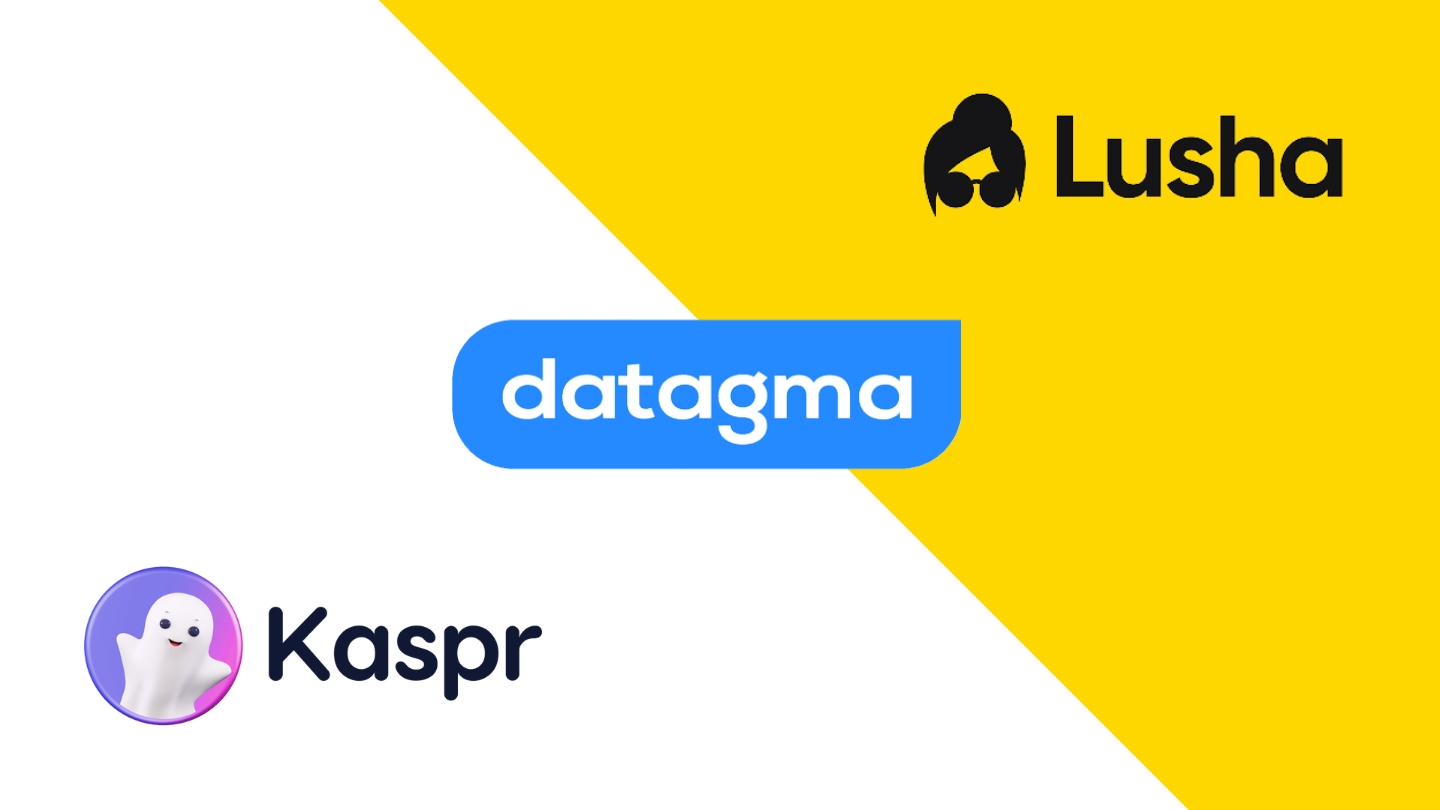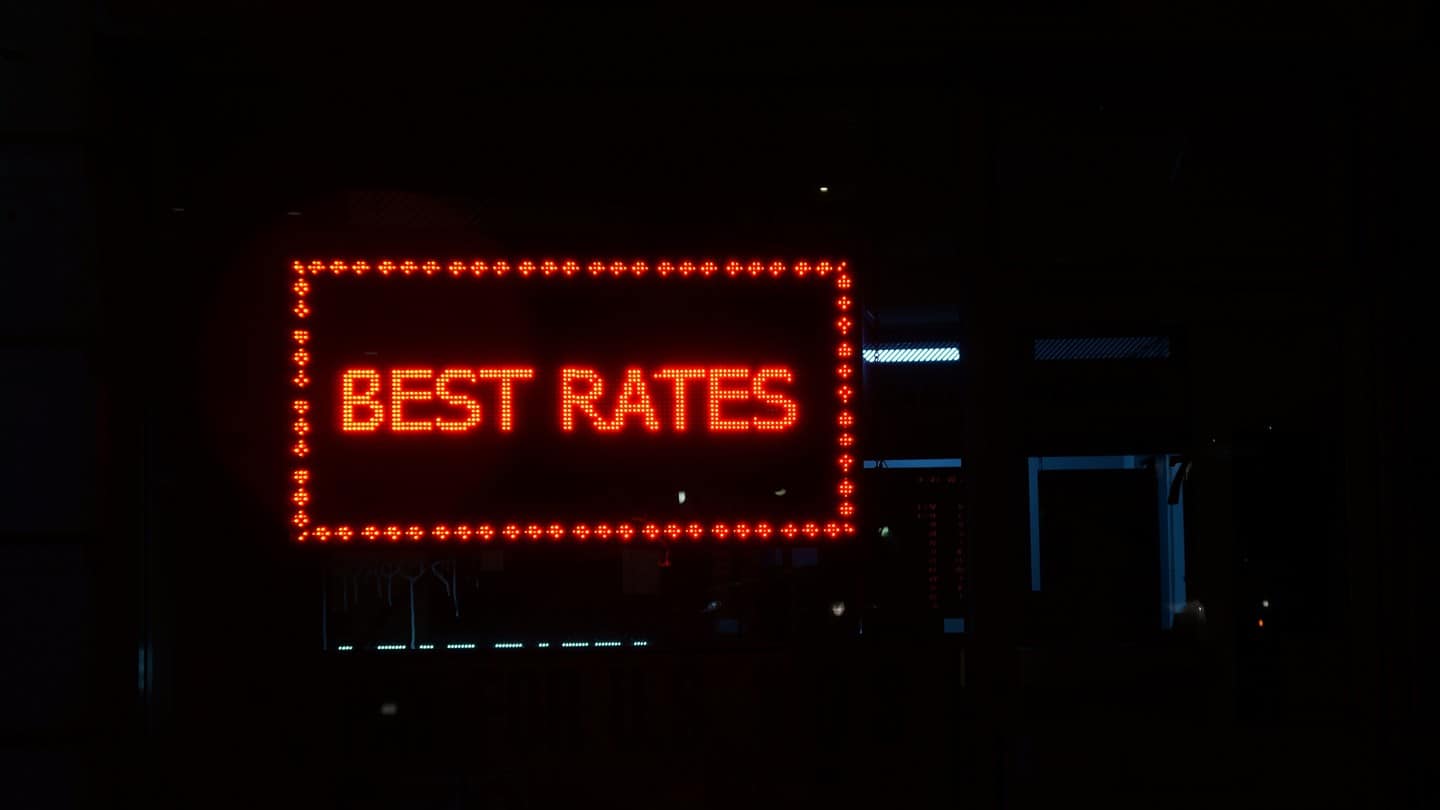The BANT analysis grid is a standard for qualifying your leads. But is it still relevant in 2017? The example of SaaS software sales has highlighted a number of its limitations, particularly in the importance attached to the customer budget. So isn’t it time to modernise the BANT framework to improve your conversions?
Sommaire
The origins of the BANT framework
If the acronym BANT doesn’t ring a bell, we invite you to take a look at our comprehensive guide to lead qualification.
BANT was designed by IBM to identify an opportunity. This is what their website tells us:
Opportunities are identified by talking to prospects or customers to determine their business and solution needs. The IBM process for identifying an opportunity is to use a standardised approach called BANT.
An opportunity is considered validated if prospects meet three of the four BANT items. It is then up to the sales team to decide how demanding they want to make it.
- Budget – What is the prospect’s budget?
- Authority – Does the prospect have decision-making power, or are they an influencer?
- Need – What is the prospect’s business need?
- Timeline – What is the prospect’s desired timeline?
The limits of the BANT analysis grid for qualifying your leads in the SaaS world
- Budget – SaaS sales are now OPEX, whereas traditionally these purchases were CAPEX… What exactly does this change?
- Authority – Do companies today make these kinds of decisions under the sole command of an executive?
- Need – What is a Need compared to a Must or a Want? Does a SaaS really correspond to a need, or more often to a Nice-to-Have ?
- Timeline – Is the concept of a timeline still relevant in SaaS, with sales cycles measured in days and implementation that can be done with a single click?
But more generally, do we still live in a sales-centric world, where what we are looking for is a customer with a specific budget that they can allocate to a solution?
Don’t we live in a customer-centric world, where we have to help the customer identify, diagnose and solve a problem?
If this is the case, what is changing? And how can we now better qualify a prospect in SaaS?
#1 SaaS is about priority, not budget
Definition Budget: an estimate of income and expenditure for a given period of time.
SaaS situation: Most SaaS services are charged at a fraction of their hardware equivalent. Pricing of €500 – €5000 per month should not be a problem for a healthy business with a real need. It can go up to €40,000 per month for larger companies, but again, there is ALWAYS a budget. The real question is not the budget, but the priority. A priority that evolves over time.
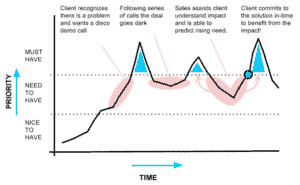
In the graph above, we see that the priority changes between nice-to-have, need-to-have and up to must-to-have. It is essential to determine where you are on the graph.
If the priority is at a low point, the client may refuse the offer, arguing that there is no more budget available, not realising that conditions may change and the priority increase again.
If you understand the context and their problem, you can make them understand the impact your service will have on their business, and thus increase the priority your solution has for them.
What to do as a SDR/AE(sales development representative and account executive ): At the beginning of the sales process, when the customer is still in the discovery phase, this is the ideal time to ask: “Is this initiative decisive for your company?”; “Where does it fit in”; “Do you see its priority for you evolving over time?
#2 In SaaS, authority is distributed, not hierarchical
Definition Authority: The power or right to give orders, make decisions, and compel obedience.
Situation in SaaS: In SaaS, and more generally in any sale, we are witnessing the gradual disappearance of a hierarchical decision-making process. Now a simple user opinion can change the conclusion of a sale. Many companies now form small teams that have to reach a consensus. They often consist of 1 or 2 users, a manager, a financier, etc.
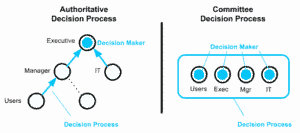
In this image, a very classic decision tree can be seen on the left. Users feed back information to the manager, who passes it on to an executive who makes the final decision. However, many SaaS solutions are now user-centric. This explains why UX and UI have become so important in recent years.
On the right-hand side of the picture, the decision-making process is done in a shared way, by a small team. It is rarely the executive who decides, but the user, guided by the manager and the executive (who validates the whole process).
What to do as a CSD/EA: The priority is therefore not who will make the decision, but how it will be made. Here are some relevant questions in this context: “Who else is involved in this project and could benefit from it?”; “Who else could I invite to our next meeting?”; “Have you been involved in other similar commissions recently?
#3 In SaaS, impact takes precedence over need
Definition Need: Wanting something because it is essential or very important.
Situation in SaaS: SaaS has become an extremely competitive sector, with all services based on the same cloud infrastructure, with the same colour codes, etc., and the competition often comes down to who has the best features. This is not really in the interest of the customer, who will often have to pay for features he will never use. As an SDR/AE, you can play a key role in avoiding this bidding war by identifying the impact the solution can have on the customer’s business.
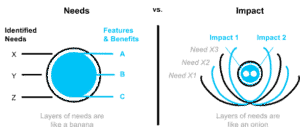
On the left, a traditional view of the customer approach, where each of their requirements is translated into functionality with its inherent benefits. The image on the right shows us that a customer’s needs are rather like… an onion, with many layers that need to be peeled back to the core. After often 6 or 7 layers (and therefore 6 or 7 questions!), you can finally get to the impact on their business, the real source of the customer need.
This impact determines the difference between a nice-to-have and a must-have, and understanding this concept is what separates a good AE from an excellent AE.
What to do as a CSD/EA: You can determine the impact of a service by talking to the customer, so hold meetings with your teams and have them prepare a carefully prepared list of questions. As an SDR, you will not be able to peel the whole onion on the first call (the customer does not trust you yet). But you will be able to move forward by asking 1 or 2 more questions: “Can I ask you what the impact will be for your team beyond offering you better dashboards?”; “My SDR briefed me on the impact of your service (…), have we got it right?” (AE).
#4 Rather than a timeline, a milestone
Definition Timeline: A specific period of time during which something happens or is planned to happen.
SaaS situation: The problem here is not only with SaaS sales, but it is a mistake that all sales professionals make far too often. They ask the customer, “When will you need this solution?”, and from there establish a timeline with a date by which they must receive the purchase order. Yet the opposite reasoning is needed.
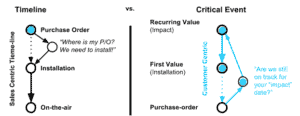
Rather than trying to determine when you will need the customer’s purchase order, you need to have the customer’s needs in mind (when will the customer need the desired impact?).
Let’s take a simple example: if the client has a peak in business on July 7, they will need your Sales Hacking solution in place by the end of June. If you don’t receive a purchase order by 22 June, don’t call and ask “Jennifer? Where is the purchase order? We need to start the installation…”, but instead ask “Jennifer, I’m calling to check that you still want our solution installed for your peak activity on 7 July”.
The milestone is not that you receive a purchase order, but that the customer has your new solution in place when they need it.
What to do as a CSD/EA: You need to identify this milestone. The key question to ask is “When do you need our solution to be operational?” and then “What happens if you miss this date? When the AE takes over the client, he/she may ask: “My colleague told me that you need our solution by (…) in order to (…) or else you risk (…); let’s think together about how to avoid it” .
The BANT model is still valid, it just needs to be modernised to optimise the qualification of your leads
As you can see, although many new techniques have been developed to qualify your leads, the BANT framework is still valid and very useful, but needs to be modernised for use in SaaS sales.
- Need = Impact on the client’s business
- Timeline = Customer’s deadline event
- Budget = Priority for the client
- Authority = Client’s decision process
The work done here to redefine the BANT framework is far from trivial. If you work in sales, this article may be of great importance to you and your approach to SaaS sales (but not only!).
It’s no longer about offering a solution to a customer by collecting their objections – it’s about helping them to identify a real problem and solve it. Do that, and the rest will follow!

